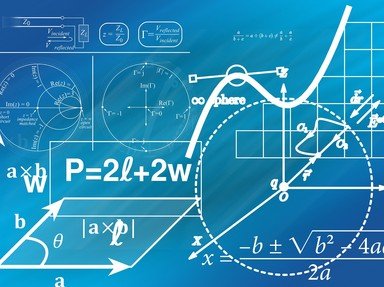Quiz Answer Key and Fun Facts
1. When a vertex Q is connected by an edge to a vertex K, what is the term for the relationship between Q and K?
2. All graphs must have edges.
3. In graph theory, it is possible that two graphs might look (at least to the uneducated eye) exceedingly dissimilar, yet in actuality be equal. How can we determine whether or not two graphs are equal? (Make sure your answer is true in ALL cases.)
4. Isomorphism is similar to equality, but more general. Of the following common graphs, which two are isomorphic?
5. The complete graph, denoted Kv (where v represents the number of vertices, and v is a positive integer), is the graph having all possible edges. In other words, each vertex in Kv is connected to all of the other vertices in Kv. One can determine the number of edges in Kv by counting, but it is much easier to use a formula! Which of the following formulas gives the number of edges (e) of the complete graph on v vertices?
6. In graph theory, a graph X is a "complement" of a graph F if which of the following is true? (Make sure your answer is true in ALL cases.)
7. An isomorphism can be proven between a graph T and a graph B if their complements are isomorphic.
8. Which of the following are you NOT allowed to do when creating an expansion of a graph?
9. Which of the following graphs can be drawn without edge crossings?
10. There are thirty-four possible (not isomorphic) graphs with five vertices. Which of the following graphs is isomorphic to its OWN compliment?
Source: Author
diamondback1
This quiz was reviewed by FunTrivia editor
crisw before going online.
Any errors found in FunTrivia content are routinely corrected through our feedback system.

